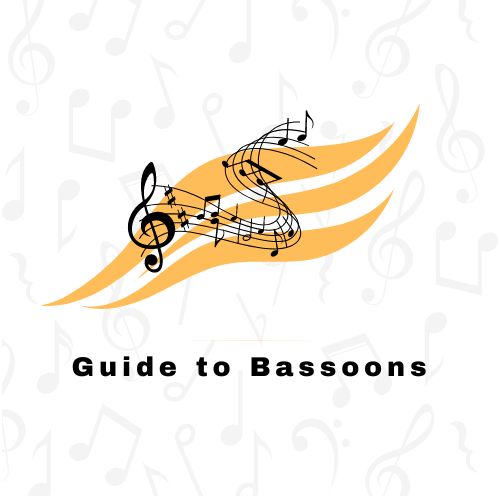Bassoons are woodwind instruments that were developed during the baroque period. The word bassoon came from the French word ‘Basson,’ and the Italian word, ‘bassone.’ However, the Italian name for the bassoon is ‘fagotto,’ which is similar to the Spanish and Romanian, ‘fagot.’ In old French, the word ‘fagot’ is translated as ‘bundle of sticks.’In contrast to that, this term was quite misleading, as the latter name was not used as a general term until later. Meanwhile, in an early English variation, the word ‘Fagel’ was used in the year 1450 to refer to firewood.
According to music historians, the dulcian Renaissance woodwind instrument is generally considered as the forerunner of the modern bassoon. These two instruments share the same characteristics, the double reed that is fitted to a metal crook, drilled tone holes, and conical bore. The bassoon was one of the most common double reeds, woodwind instruments that has a low pitch. Despite its difficulty in tuning and low volume, the bassoon remained notable in France due to its expressive and gentle timbre. Moreover, this instrument disassembles into six main pieces, including its reed.
Generally, bassoons are made out of medium-hard maple woods like sycamore maple and sugar maple. In addition, less expensive models were mostly made of ebonite hard rubber or polypropylene. Metal bassoons were also made but have not been manufactured since 1889.
Interestingly, there were also other types of bassoons. These were the Contrabassoon or double bassoon and the tenoroon, also known as tenor bassoon.
Contrabassoon/ Double Bassoon
The Contrabassoon instrument is a larger version of the bassoon. Its sounding octave is also lower, while its reed is considerably larger, measuring about 65 to 75 millimeters in total, compared to the bassoons reed that measures 53 to 58 millimeters. Additionally, this instrument is twice as long as the bassoon. It also has curves around itself, supported by an endpin. Moreover, the Contrabassoon is a very deep sounding instrument that players the same register as the tuba and contrabass version of saxophone and clarinet. When it comes to tonally, the Contrabassoon sounds similar to the bassoon, although all parts of its compass are different in tone from it.
Furthermore, contrabassoons have a sounding range of B♭0, which could extend up to three octaves and a major third to D4. Typically, this instrument is notated an octave above sounding pitch in clefs and uses bass clef. Contrabassoons also has a booming quality that is quite similar to organ pedals in its lower registers. In fact, it can produce a buzz or rattling sound when loud, and its low register was used. This is the desired quality of the Contrabassoon for some performer, as it adds a sinister effect.
Some notable bassoonists were the musicians Michael Tilson Thomas, Gunther Schuller, John Woolrich, and Kalevi Aho.
Tenoroon/ Tenor Bassoon
A tenoroon or tenor bassoon is a member of the bassoon family. Aside from its current name, the tenoroon is also known and called as quart-andquint-bassoon, mini bassoon, or fagottino. Due to its smaller size, the tenoroon’s tone is much reedier and lighter in comparison to the bassoon.
Historically, the tenor bassoon is an old instrument that had evolved from the tenor curtal or dulcian. However, there are no visual, literary works for the instrument, aside from the few written pieces of obscure musicians back in the Baroque period. Additionally, there was an old theory stating that the English horn part in Gioachino Rossini’s overture, William Tell, was initially written for the tenor bassoon. This was because the Italian notation is in bass clef. Nevertheless, this theory was debunked.
The sound of the tenoroon can be compared to a dull English horn. Also, it has been described as saxophone-like. Interestingly, this tenor bassoon could make an alto and tenor voice in an ensemble or orchestra. It could also bridge the octave gap between the oboe family and the bassoon family, in which it belongs. Aside from that, it can also extend the range of bassoons and give more flexibility to the range that the bassoon lacks. It has a sounding range of F3 to F5.

